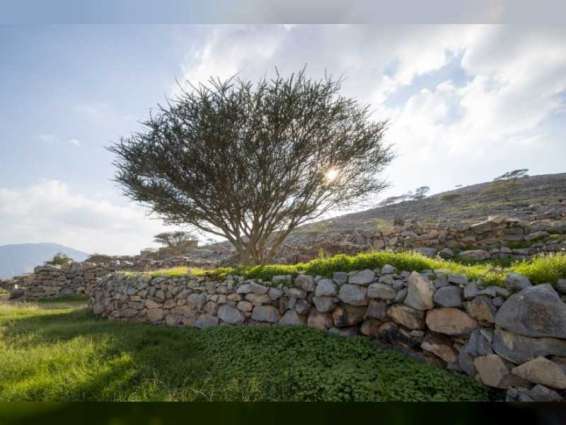RAS AL KHAIMAH, (Pakistan Point News - 29th Jan, 2020) Valleys, dams and mountains and a green carpet covering the Emirate of Ras Al Khaimah have turned the region into a beautiful oasis, which celebrates nature and strengthens environment sustainability.
Starting at Wadi Shawka or Shawka valley, where you can feel a cold breeze, you walk past fragrant palm trees, flowers and plants, and move on to Wadi Al Layat, Wadi Al Munai, Wadi Naqab and Wadi Al Zaytoon.
Wadi Shawka showcases the beauty of nature through its charming environment, mountains and gardens, as well as the plants that decorate the summit of Al Sahab, which allows adventurers to hike the mountain while enjoying nature.
From the summit of Yanas Mountain, you can see the old houses of the ancestors of the Emirati people, which tell visitors the story of their lives full of patience, wisdom and determination.
Wadi Al Beeh, which was established in 1982, is located at the entrance of Jebel Jais, which is the highest mountain in the UAE.
Valleys and dams create a naturally rich ecological system, as they supply nearby farms with water throughout the year and during drought and are important to tourism, enabling residents and tourists to camp and enjoy nature.
Valleys and dams in Ras Al Khaimah have become attractions for tourists seeking to enjoy nature and provide a sustainable water source by collecting rainwater used for agriculture.
Ras Al Khaimah has 31 dams with a total storage capacity of 26.2 million square metres of water. These dams collected large quantities of rainwater on 11th and 12th January, 2020, amounting to 23.33 million square metres.
A 62-year old resident Ahmed Al Mazrouei from the village of Adhen expresses his happiness at the recent rains witnessed by the emirate, noting its positive effects on people's lives and plants and trees, as well as the increased level of water in dams.
He stresses that a large amount of water flowing through "Al Ghail Falls" is a blessing, adding that the area has not seen this level of rain for over 30 years.
Dr. Marina Tsaliki, Plant Conservation and Research Specialist at Public Works and Services Department of the Government of Ras Al Khaimah, says that rainfall in many areas of the emirate has contributed to an increase in its variety of plants, including common and rare species.
In an interview with the Emirates news Agency, WAM, Tsaliki says that Ras Al Khaimah’s flora abounds with many different types of plants numbering over 320 species, which is increasing annually, adding that the emirate accounts for some 50 percent of the total number of native plants in the country, amounting to more than 650 species.
Tsaliki also notes that the emirate is currently witnessing climate conditions that help flora flourish and grow, adding that green spaces are located around the emirate due to rainfall.
She points out that through her fieldwork in over 270 separate locations in the emirate, she expects the emergence of new species of plants in different areas and environments, in light of the expansion of green areas in many regions, especially in dry desert areas where flowers are not expected to grow.
Tsaliki stresses that rainwater is very useful and has positive implications on the sustainability of local flora. It leads to the appearance of new species of plants and also helps protect flora and their life cycles, as well as animals and other organisms that feed on plants, she notes.
Regarding the possibility of organising tourism tours in areas with diverse plant life to introduce visitors to the emirate’s native plants, she says that they are currently investing in education and training courses and are in the process of developing related programmes while highlighting the difference between different plant species for tourists and visitors interested in flora and nature.
She adds that the Ras Al Khaimah Museum features a selection of native plants at its front yard with labels explaining their Names and uses, with some even having specific medical uses.
Regarding the possibility of using these plants in landscaping and gardening,Tsaliki states, "Our plan consists of presenting a significant number of various plants for landscaping and gardening, to encourage the use of native plants that are easier to sustain than imported ones, which require more water, care and maintenance."
She then expresses her admiration at the growth and development of the emirate’s flora, which is unexpected in her opinion in a dry environment while pointing out that the large diversity of plants in Ras Al Khaimah, including common and rare plants, will attract tourists, especially nature lovers and admirers of green and mountain areas.
Tsaliki emphasises the importance of raising public awareness of native and imported plants, noting that related efforts are being exerted, which is reflected by the emergence of native plants and the control of imported plants.
"We already have a nursery and we are working on expanding it to protect native plans from any future changes," she says in conclusion.




